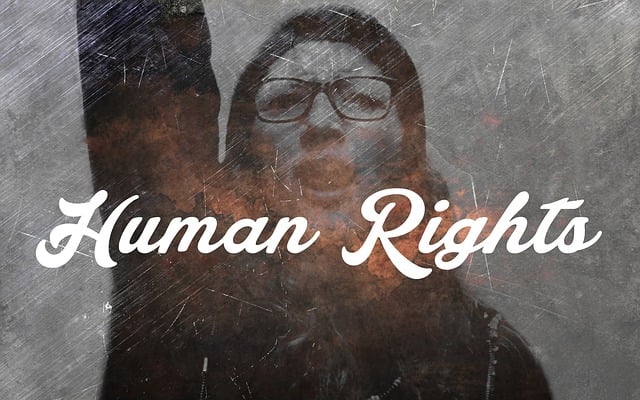Oregon's Department of Human Services (DHS) operates a robust child welfare system, governed by strict legal obligations designed to protect at-risk youth while balancing parental rights. This framework dictates DHS involvement from initial investigations to court processes, emphasizing ethical practices. Key components include rapid response, thorough case assessments, family-centric services, and collaborative case planning with parents or guardians. The system prioritizes reuniting families, with comprehensive services for parents and post-case management to ensure child safety and stability. Adherence to these legal obligations is vital for maintaining the integrity and effectiveness of Oregon's child welfare services.
“Uncovering Oregon’s Child Welfare Laws: A Comprehensive Guide for DHS. This article offers an in-depth exploration of Oregon’s legal framework for child welfare services, highlighting key aspects that determine the complex process of protective services. From understanding the legal foundations to deciphering parental rights and intervention stages, we delve into the crucial legal obligations of the Department of Human Services (DHS). Essential reading for those invested in ensuring the well-being of children under Oregon’s care.”
- Understanding Oregon's Legal Framework for Child Welfare
- Key Obligations of DHS in Child Protective Services
- Rights and Roles of Parents/Guardians in the Process
- The Assessment and Intervention Stages: A Legal Perspective
- Long-term Goals, Case Closure, and Post-case Management
Understanding Oregon's Legal Framework for Child Welfare

Oregon’s legal framework for child welfare is a comprehensive set of laws and regulations designed to protect and nurture at-risk children. The state’s Department of Human Services (DHS) plays a pivotal role in ensuring the well-being of children within its care, upholding their legal rights, and promoting safe, stable homes. Oregon’s approach emphasizes the importance of meeting the unique needs of each child, including those involved in foster care or facing potential removal from their families.
The state’s laws lay out clear guidelines for when and how DHS can become involved in a family’s affairs, highlighting the agency’s legal obligations to both children and parents. These regulations cover various aspects, such as investigation procedures, court involvement, and the range of services offered to support families and prevent unnecessary interventions. Understanding these legal frameworks is crucial for all stakeholders—from social workers to parents and guardians—to ensure Oregon’s child welfare system operates effectively and ethically.
Key Obligations of DHS in Child Protective Services

The Oregon Department of Human Services (DHS) has a multifaceted role in providing Child Protective Services, with several key legal obligations to ensure the safety and well-being of children. These include an obligation to receive and investigate reports of suspected child abuse or neglect within a specified timeframe, typically 48 hours. Once a report is received, DHS must conduct a thorough assessment, interviewing family members and other relevant individuals to determine the level of risk and the best course of action.
Under Oregon law, DHS also has the duty to provide services aimed at preserving families when possible, including safety planning, parent education, and access to resources for intervention and support. If removal is necessary, DHS must work collaboratively with families to develop a case plan that outlines goals, services, and timelines for reunification or alternative permanent placements. This process involves ongoing legal proceedings, regular court reviews, and adherence to strict deadlines, all aimed at ensuring the best interests of the child are met while also respecting the rights of parents and guardians.
Rights and Roles of Parents/Guardians in the Process

In Oregon, parents or guardians have significant rights and roles in the child welfare process, as defined by the Department of Human Services (DHS). They are entitled to be informed about any investigations or actions regarding their child’s well-being and have the right to participate actively in case planning. Parents must collaborate with DHS workers to create a safety plan for their child while also fulfilling their legal obligations to ensure the child’s stability and security.
Guardians have the duty to make decisions in the best interest of the child, including ensuring access to necessary resources like medical care and education. They are also responsible for participating in court proceedings if involved, attending meetings with DHS caseworkers, and adhering to any court-ordered services or plans designed to improve family dynamics and address any safety concerns raised during the welfare process.
The Assessment and Intervention Stages: A Legal Perspective

In Oregon, the Assessment and Intervention stages are critical components of the child welfare system, governed by a series of legal obligations designed to protect vulnerable children. During the assessment phase, social workers meticulously evaluate situations where a child’s safety and well-being may be at risk, gathering evidence and interviewing relevant parties under the legal framework established in the Oregon DHS child welfare law guide. This process ensures that decisions are made based on facts and legal standards, protecting both the rights of children and their families.
Intervention strategies, informed by the assessment findings, involve various legal actions to address the identified risks. Social workers have specific legal obligations when implementing interventions, including informing parents or guardians about their rights and the potential consequences of non-compliance. These measures aim to foster a collaborative environment while upholding the integrity of the legal process, ultimately striving for the best interest of the child within the context of Oregon’s comprehensive child welfare laws.
Long-term Goals, Case Closure, and Post-case Management

The long-term goals of Oregon’s DHS child welfare system are multifaceted, focusing on ensuring the safety, well-being, and stability of children while aiming to reunite them with their families when possible. This involves a comprehensive approach that includes providing necessary services to parents or guardians to address any issues that led to the child’s removal. Case closure is not merely an end point but a transition phase where the focus shifts towards post-case management. During this period, the goal is to support families in maintaining stability and preventing future involvement with child welfare, thereby achieving long-term positive outcomes for both children and parents.
Effective post-case management involves ongoing legal obligations and responsibilities for all parties involved. The child welfare agency plays a crucial role in monitoring progress, providing resources, and offering additional support services as needed. Parents or guardians are expected to adhere to court orders, attend meetings, participate in required treatments or programs, and maintain safe and suitable living environments. This collaborative effort ensures that the child’s needs are met, and any potential risks are promptly addressed, fostering a secure and nurturing environment for all involved.






